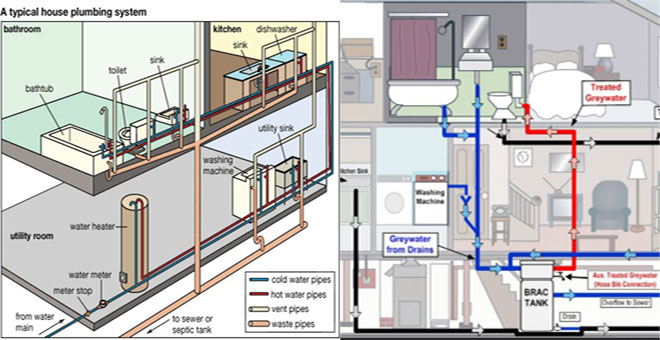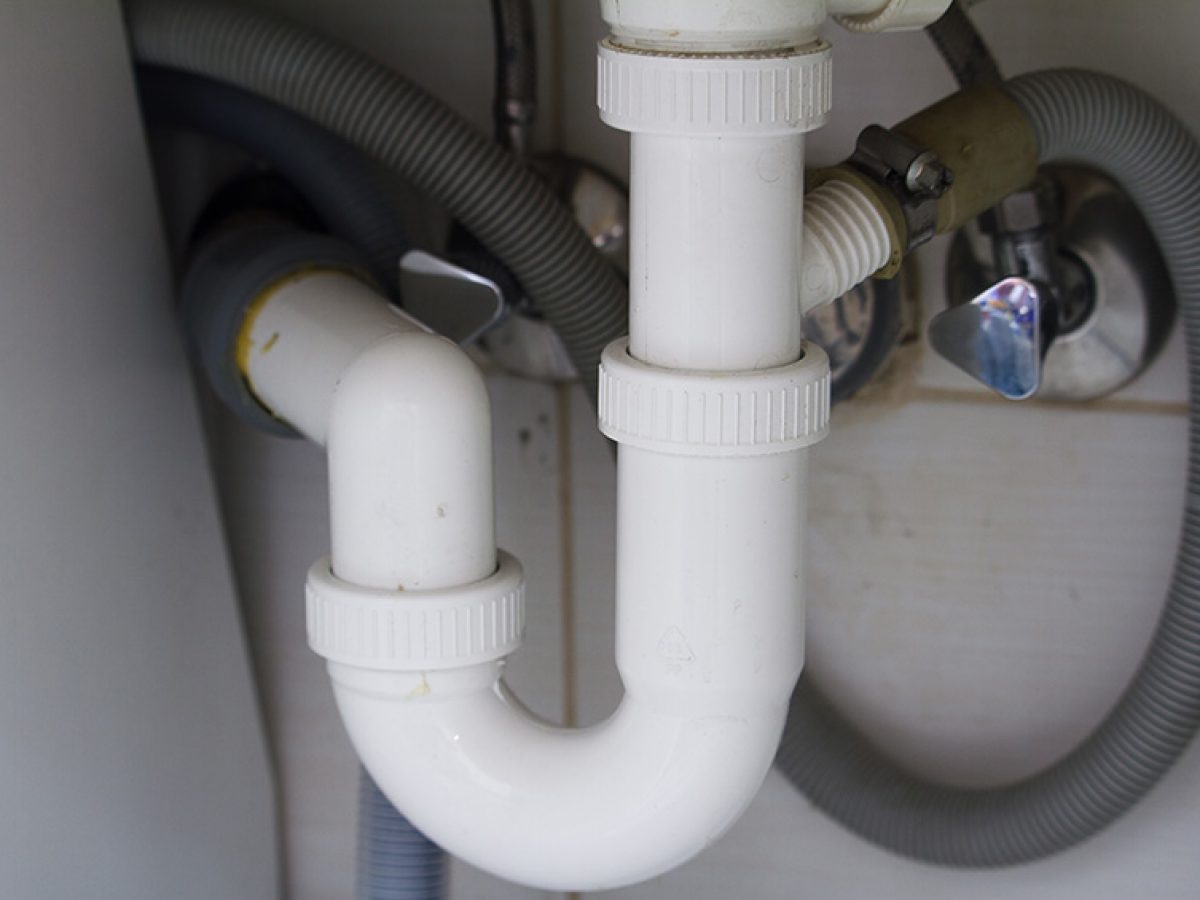The content on the next paragraphs relating to Exploring Your Homes Plumbing Anatomy is seriously intriguing. Don't skip it.

Comprehending exactly how your home's plumbing system works is important for each house owner. From providing clean water for drinking, food preparation, and showering to securely eliminating wastewater, a well-kept plumbing system is essential for your family's health and wellness and comfort. In this comprehensive overview, we'll discover the complex network that comprises your home's pipes and deal suggestions on maintenance, upgrades, and handling usual concerns.
Introduction
Your home's pipes system is greater than just a network of pipelines; it's an intricate system that guarantees you have access to clean water and efficient wastewater elimination. Knowing its components and exactly how they work together can aid you stop expensive repairs and make certain every little thing runs smoothly.
Basic Components of a Pipes System
Pipelines and Tubing
At the heart of your plumbing system are the pipelines and tubes that bring water throughout your home. These can be made of various materials such as copper, PVC, or PEX, each with its benefits in terms of longevity and cost-effectiveness.
Fixtures: Sinks, Toilets, Showers, and so on.
Fixtures like sinks, bathrooms, showers, and tubs are where water is utilized in your home. Recognizing exactly how these fixtures link to the pipes system helps in diagnosing issues and intending upgrades.
Shutoffs and Shut-off Points
Shutoffs regulate the flow of water in your plumbing system. Shut-off valves are crucial throughout emergency situations or when you need to make repairs, enabling you to separate parts of the system without interrupting water flow to the whole residence.
Water System System
Key Water Line
The major water line connects your home to the metropolitan water supply or an exclusive well. It's where water enters your home and is distributed to different fixtures.
Water Meter and Pressure Regulatory Authority
The water meter steps your water use, while a pressure regulator guarantees that water streams at a risk-free stress throughout your home's pipes system, protecting against damage to pipelines and components.
Cold Water vs. Warm water Lines
Comprehending the distinction in between cold water lines, which supply water straight from the major, and warm water lines, which bring warmed water from the hot water heater, helps in fixing and preparing for upgrades.
Drainage System
Drain Pipes Water Lines and Traps
Drain pipes bring wastewater far from sinks, showers, and toilets to the sewer or sewage-disposal tank. Catches prevent sewer gases from entering your home and likewise catch particles that might create obstructions.
Ventilation Pipes
Air flow pipelines allow air right into the water drainage system, preventing suction that could slow drain and trigger catches to vacant. Correct air flow is essential for preserving the stability of your plumbing system.
Value of Proper Drainage
Guaranteeing proper drainage avoids backups and water damage. Routinely cleaning up drains and maintaining traps can prevent costly repairs and expand the life of your pipes system.
Water Furnace
Sorts Of Hot Water Heater
Hot water heater can be tankless or standard tank-style. Tankless heating units warmth water as needed, while storage tanks keep heated water for immediate use.
Just How Water Heaters Connect to the Pipes System
Recognizing just how hot water heater link to both the cold water supply and hot water circulation lines helps in detecting problems like inadequate hot water or leakages.
Upkeep Tips for Water Heaters
On a regular basis purging your hot water heater to eliminate sediment, examining the temperature level settings, and inspecting for leakages can prolong its lifespan and boost power efficiency.
Usual Pipes Concerns
Leakages and Their Causes
Leakages can happen because of aging pipes, loose installations, or high water pressure. Addressing leakages quickly prevents water damages and mold and mildew development.
Blockages and Blockages
Obstructions in drains pipes and bathrooms are frequently triggered by flushing non-flushable items or a buildup of oil and hair. Making use of drain displays and bearing in mind what goes down your drains pipes can protect against blockages.
Signs of Plumbing Problems to Look For
Low water stress, slow drains pipes, foul odors, or uncommonly high water costs are signs of possible plumbing troubles that ought to be resolved immediately.
Plumbing Maintenance Tips
Regular Assessments and Checks
Schedule yearly pipes evaluations to capture issues early. Seek signs of leakages, corrosion, or mineral accumulation in taps and showerheads.
DIY Maintenance Tasks
Straightforward tasks like cleansing tap aerators, checking for commode leaks using dye tablet computers, or insulating subjected pipelines in cold environments can stop significant plumbing problems.
When to Call a Specialist Plumbing
Know when a pipes concern calls for professional experience. Attempting complicated fixings without proper understanding can cause even more damage and higher repair service prices.
Updating Your Plumbing System
Reasons for Updating
Updating to water-efficient components or replacing old pipes can enhance water top quality, lower water costs, and enhance the value of your home.
Modern Pipes Technologies and Their Advantages
Explore innovations like wise leakage detectors, water-saving toilets, and energy-efficient hot water heater that can conserve money and minimize ecological influence.
Price Considerations and ROI
Determine the ahead of time expenses versus lasting cost savings when taking into consideration pipes upgrades. Numerous upgrades spend for themselves via reduced energy expenses and fewer repair services.
Ecological Effect and Preservation
Water-Saving Components and Devices
Installing low-flow faucets, showerheads, and bathrooms can significantly minimize water usage without giving up efficiency.
Tips for Decreasing Water Usage
Basic habits like repairing leakages immediately, taking much shorter showers, and running complete lots of washing and meals can save water and reduced your energy costs.
Eco-Friendly Pipes Options
Think about lasting pipes products like bamboo for floor covering, which is durable and eco-friendly, or recycled glass for countertops.
Emergency situation Readiness
Steps to Take During a Pipes Emergency situation
Know where your shut-off valves are located and just how to switch off the water in case of a ruptured pipe or major leakage.
Value of Having Emergency Contacts Convenient
Maintain get in touch with information for neighborhood plumbing professionals or emergency services conveniently offered for quick feedback during a plumbing situation.
DIY Emergency Situation Fixes (When Suitable).
Short-term solutions like utilizing duct tape to spot a dripping pipe or positioning a container under a leaking faucet can reduce damage up until an expert plumbing professional shows up.
Verdict.
Comprehending the anatomy of your home's pipes system empowers you to maintain it efficiently, saving time and money on repair work. By adhering to routine upkeep routines and remaining informed about modern-day plumbing technologies, you can ensure your plumbing system runs successfully for years to find.
HOW YOUR PLUMBING SYSTEM WORKS
Which Pipes Do What?
Blue lines = fresh water supply entering the building
Red lines = hot water supply entering the building
Grey lines = pipes carrying waste away from the building and venting pipes carrying gases away from the building (through the roof)
YOUR MAIN PLUMBING SYSTEMS
There are two main plumbing systems that support your home s basic plumbing needs one that brings clean water into your home, and one that sends dirty water away from your home. Connected to the toilet, bath, shower, and other faucets in your home, these two systems keep your water flowing in the right directions.
ACCESSING FRESH WATER
Fresh and clean water is brought into your home through the main water supply line . Filtered through one pipe, this water is pressured to flow into the various fixtures in your home at any given time.
This water can be sourced from a well located on your property, a pond or river (mostly cottages), or, as in most cases, from the city s municipal water treatment centre. However, it is important to note that water that is untreated, such as the water siphoned from ponds or rivers, may not be safe to drink. Personal water supplies always need to be treated for hardness and contaminants before consumed.
MUNICIPAL WATER SUPPLIES
Improve taste and odour
Remove sediment
Eliminate hardness
Reduce chlorine
COLD WATER SUPPLY VS. HOT WATER SUPPLY
Cold water flows into your home or building through the service line, which then distributes hot or cold water to your fixtures. This line is most commonly run through a central column that runs floor to floor. Hot water runs in short and straight pipes as the longer the pipeline, the more heat that will be lost in the transfer. Having shorter pipes also allows residents to access hot water more quickly.
WASTE WATER SYSTEM
Your wastewater system is divided into two parts pipes that send wastewater away from your home and venting pipes that send sewer gas away from your home. Sewage water travels through pipes that flush the water and waste towards local sewers that are operated and managed by your city or town. Most sewer systems rely on gravity to move the wastewater to where it needs to go.
The further away from your toilet or sink, the larger wastewater pipes become. This allows for waste to be disposed of from various parts of your home or business at once without pipe blockages. The angle and flow of these pipes are also essential for keeping your waste pipes clear of build up.
https://harrisplumbing.ca/how-your-home-plumbing-system-works/

HOW YOUR PLUMBING SYSTEM WORKS
Which Pipes Do What?
YOUR MAIN PLUMBING SYSTEMS
There are two main plumbing systems that support your home s basic plumbing needs one that brings clean water into your home, and one that sends dirty water away from your home. Connected to the toilet, bath, shower, and other faucets in your home, these two systems keep your water flowing in the right directions.
ACCESSING FRESH WATER
Fresh and clean water is brought into your home through the main water supply line . Filtered through one pipe, this water is pressured to flow into the various fixtures in your home at any given time.
This water can be sourced from a well located on your property, a pond or river (mostly cottages), or, as in most cases, from the city s municipal water treatment centre. However, it is important to note that water that is untreated, such as the water siphoned from ponds or rivers, may not be safe to drink. Personal water supplies always need to be treated for hardness and contaminants before consumed.
MUNICIPAL WATER SUPPLIES
COLD WATER SUPPLY VS. HOT WATER SUPPLY
Cold water flows into your home or building through the service line, which then distributes hot or cold water to your fixtures. This line is most commonly run through a central column that runs floor to floor. Hot water runs in short and straight pipes as the longer the pipeline, the more heat that will be lost in the transfer. Having shorter pipes also allows residents to access hot water more quickly.
WASTE WATER SYSTEM
Your wastewater system is divided into two parts pipes that send wastewater away from your home and venting pipes that send sewer gas away from your home. Sewage water travels through pipes that flush the water and waste towards local sewers that are operated and managed by your city or town. Most sewer systems rely on gravity to move the wastewater to where it needs to go.
The further away from your toilet or sink, the larger wastewater pipes become. This allows for waste to be disposed of from various parts of your home or business at once without pipe blockages. The angle and flow of these pipes are also essential for keeping your waste pipes clear of build up.
https://harrisplumbing.ca/how-your-home-plumbing-system-works/
Do you appreciate more info about ? Make a short review further down. We would be glad to see your suggestions about this page. Hoping to see you back again in the future. Feel free to set aside a second to distribute this content if you enjoyed it. Thanks for taking the time to read it.
Click Here